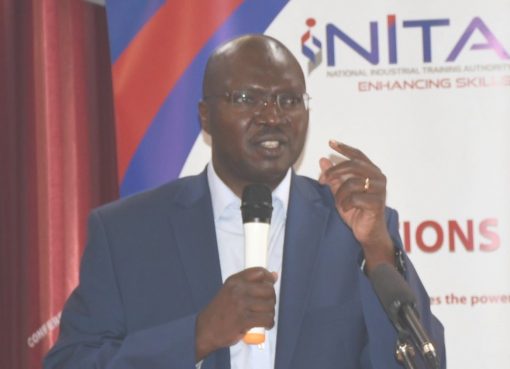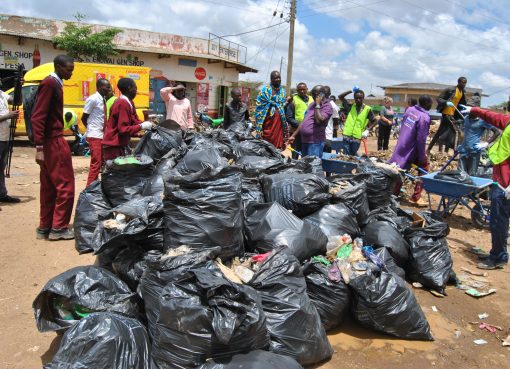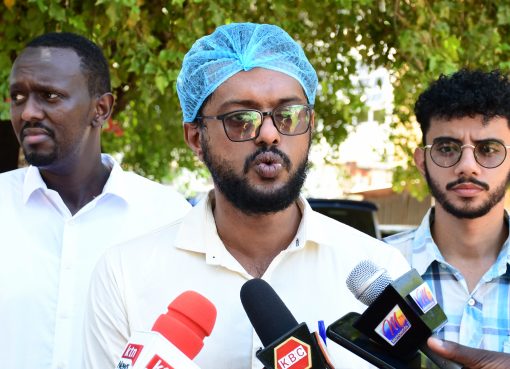Border community leaders in South Sudan and Kenya have agreed to use borders as bridges and not barriers for the advancement of their peoples and for regional development.
The leaders applauded efforts by their respective Heads of Governments to sensitize the local communities on peace efforts for the coexistence.
They urged their governments not to build fences along the common boundary but to instead respect the migratory routes of wildlife allowing access to grazing lands for all people in the area observing that the communities at the border had lived harmoniously over the years.
The leaders from both countries spoke on Friday during a joint sensitization meeting in Kapoeta town in the county of Namuronyang, South Sudan. The meeting is part of efforts to support peace initiatives while pacifying border communities and fast-tracking development along the common boundary.
“We want to use the borders as bridges and not barriers for our people to cross normally and peacefully. We should not build any fence. What will happen to our people and livestock that have always moved freely along the border points?” the Cabinet Secretary for Petroleum and Mining and leader of the Kenya delegation, John Munyes urged border officials from both countries attending the meeting.
Governor Louis Lobong Lojore of Namuranyong State and leader of the South Sudan delegation called upon the community leaders and border officials to respect the 1964 Organization of African Union (OAU) Resolution maintaining all African borders at the time of independence.
“Our two Presidents took it upon themselves to lead the peace process and it is our obligation to support them. We must as leaders take this process jointly and not separately. We are here to understand the essence of the MOU so that we can disseminate the same to our people. This process captures the spirit of both our citizens and we cannot fail them,” Lojore stressed to all the leaders gathered at the Kapoeta meeting.
Governor Josephat Nanok of Turkana on his part reiterated that the joint sensitization meeting was about the relationship of all the people along the boundary.
“On 17th June 2019, I was among leaders in the presence of our respective heads of states committed to fast-track the implementation of this MOU as it is beneficial to our communities. We must all make use of this relationship regardless of where the border will be. We must build our region as other people have done theirs,” Nanok stated as he read and explained the contents of the MOU to the gathering.
Nanok emphasized on the need for unity of the communities of the Toposa and Turkana who share linguistic and cultural similarities. He likened the relationship to that of the Maasai at the Kenya Tanzania border and the Abaluhya of the Kenya Uganda border.
Munyes and Nanok led the Kenyan delegation while Lojore led the South Sudan delegation.
All Members of Parliament and Senate from Turkana together with Members of the Turkana County Assembly attended the meeting as well as traditional elders and opinion leaders.
During the meeting, it was further agreed that a joint visit to the Namanga, Busia and Moyale border points would be made for the communities to appreciate and expose them to the dynamics of border relations.
On 17th June 2019, Southern Sudan Foreign Minister, Nhial Deng Nhial the Kenyan’s Foreign Affairs Cabinet Secretary, Monica Juma signed a Memorandum of Understanding (MOU) on the delimitation and demarcation of the common boundary between the two neighboring countries.
During the first joint sensitization meeting held in Kapoeta between 11th and 12 July 2019, all the community leaders of the two states committed to creating a conducive environment that would facilitate the joint implementation of the MOU later in the year.
Of essence for the communities, will be enhanced cross border activities and infrastructural development for the benefit of the Toposa, Turkana and Nyang’atom communities.
The MOU between Kenya and South Sudan recognizes the common heritage, good relations and interdependence between the people of the two states and commits to strengthen the existing bilateral relations.
It further seeks to promote cross border cooperation and ensuring peaceful coexistence of the border communities.
The African Union Border Program provides guidance to the implementation of the MOU by reiterating the need to maintain the sanctity and cohesion of the communities while fostering peaceful coexistence.
Further, the MOU stipulates that the two Countries shall agree on a framework for maintenance of the boundary and management of the border and also share information and resources in facilitating the process.
The MOU shall also safeguard joint bilateral and regional projects for the social and economic benefit and wellbeing of their peoples. It notes that diplomatic and political good will be referred to in resolving issues that may arise during the implementation of the MOU.
The leaders of both countries reiterated that third parties to the region, including state parties would not be welcome in the deliberations, due to the vested interests which were not for the interests of the communities along the common boundary.
Concerns of the common boundary formed part of the agenda during the two state visit by the South Sudan President in Kenya on 1stand 2nd July 2019.
It was during the state visit that the two leaders committed to having all the community leaders in the region work together to enhance peace, security and regional development for the communities.
By Peter Gitonga




